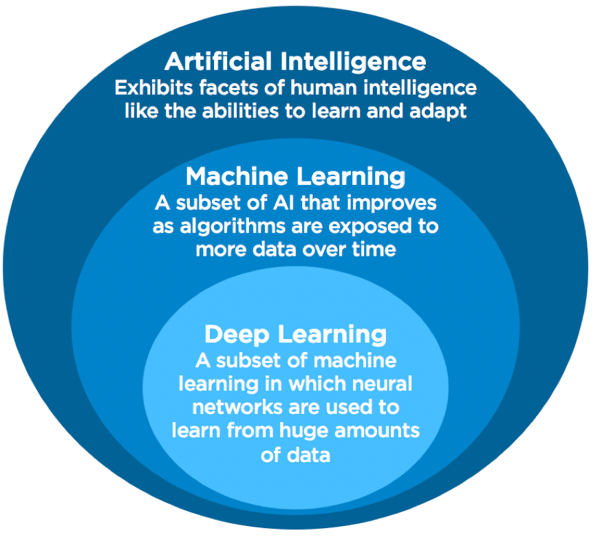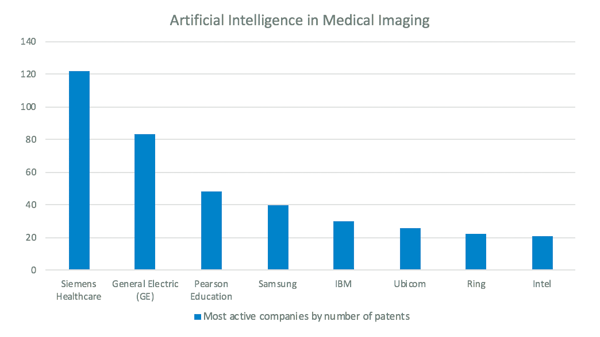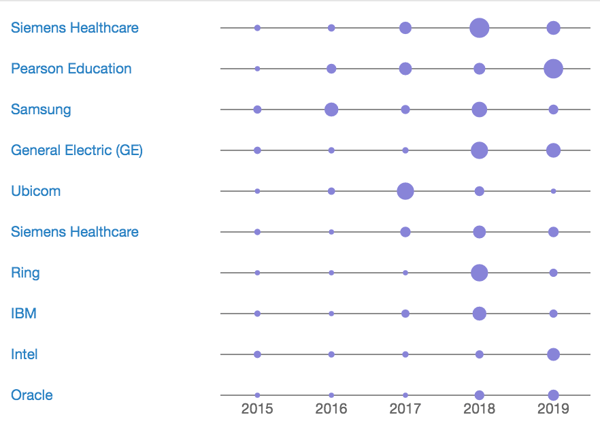In today’s hospitals, healthcare providers including radiologists, pathologists, emergency doctors, and others must analyze tens to even hundreds of medical images a day. The pressure is high to analyze these images both quickly and accurately.
Yet, because clinicians are human, mistakes and missed opportunities do occur. Even the best healthcare professionals are susceptible to fatigue, resulting in a higher likelihood of missing a key detail within the image. Radiologists or pathologists may be analyzing an image only for a specific indication or to answer a specific question, thus missing critical information about another disease. Furthermore, the number of properly trained clinicians is finite and much of the work done to analyze images is rote and straightforward. Analyzing images is not the only part of these clinicians’ day, but also tends to be the most time-intensive and tedious part.
Until recently, the only solution to these challenges was to hire and train more clinicians to handle the workload and corroborate the findings of other clinicians. Now, a new market has begun to emerge that uses artificial intelligence (AI), including algorithms created via machine learning (ML) and deep learning (DL) to improve the speed and accuracy of medical imaging analytics.
Trendy terms like AI, ML, and DL are regular topics in both mainstream media and industry marketing, but often without a clear articulation of their actual meanings and relationships to each other. In healthcare, as in other industries, AI is a type of advanced data analytics in which a software program can sense, reason, act, and adapt – in a sense, exhibiting “intelligence.” Machine learning is a subset of AI that utilizes algorithms that improve over time as they are exposed to more data. Deep learning is a subset of machine learning that utilizes neural networks, or a set of algorithms that are designed to recognize patterns, to train these algorithms (Figure 1).
In most cases, machine learning algorithms “learn” by training on sets of task-relevant images, with feedback from humans. For example, an algorithm destined to scan ultrasound images for thyroid nodules would be trained on images of ultrasounds with both benign and malignant thyroid nodules. However, well-trained algorithms require a massive number of data points and not all diseases have large enough datasets. Some deep learning neural networks are beginning to allow us to train algorithms with completely unrelated datasets, providing companies and researchers with AI technology for even the most niche, small-sample clinical indications.
 Figure 1. Machine learning (ML) and deep learning (DL) can best be described as subsets of artificial intelligence (AI). Sources: Intel and NVIDIA
Figure 1. Machine learning (ML) and deep learning (DL) can best be described as subsets of artificial intelligence (AI). Sources: Intel and NVIDIA
A variety of studies and use cases describe trained algorithms developed from ML or DL that can detect the risk or presence of cancer, stroke, arthritis, osteoporosis, and many other diseases. Many of these use cases show how AI can automate mundane and uncomplicated analyses, saving radiologists’ and pathologists’ time to focus on the more difficult cases. These technologies also help hospitals by lowering the risk of misdiagnosis, identifying at-risk patients proactively, and giving patients faster test results and greater peace of mind.
The potential of AI in medical image analytics has stirred significant interest – and not just among academic researchers or healthcare providers. Big companies have entered the market in recent years as well, with the biggest players being the original equipment manufacturers (OEMs) that make the medical scanners and their supporting software, like Siemens Healthcare and General Electric (GE). Other players in the market include companies that manufacture the processors that ultimately make all of the analyses happen, including Samsung and Intel (Figure 2).
 Figure 2. Top companies by number of patents for artificial intelligence (AI) in medical imaging. Source: Wellspring Scout
Figure 2. Top companies by number of patents for artificial intelligence (AI) in medical imaging. Source: Wellspring Scout
Because of the state of patents in software and algorithms, it’s important to look at the top companies doing innovative work in addition to patents, including publications, press releases, and other activities. Examining this data, there is a similar list of players in the market. In fact, we can see that over time, a number of other companies have entered this growing market already, with competitive dynamics that still appear to be quite fluid (Figure 3).
 Figure 3. Over the past five years, aggregate trends data show the relative innovation activity of companies in the medical imaging analytics space. Source: Wellspring Scout
Figure 3. Over the past five years, aggregate trends data show the relative innovation activity of companies in the medical imaging analytics space. Source: Wellspring Scout
However, like in other industries within the overall AI market, it’s not just Fortune 500 companies that are getting into this space. Startups are making serious headway in developing cutting-edge AI around clinical imaging. Many of the startups develop ML or DL algorithms around a specific medical image like computerized tomography (CT) or magnetic resonance imaging (MRI) scans for a specific indication or disease, then expand their offerings from there. Here are some key startups to watch:
Arterys – Provides a clinical software as a service (SaaS) analytics platform with advanced visualization and deep learning using high-speed cloud computing. (See More)
Enlitic – Uses DL to provide actionable insights to doctors. They use AI to streamline medical imaging workflows for radiologists. (See More)
Imagen – Uses ML with x-rays to detect wrist bone fractures. The FDA cleared its detection software last year. (See More)
Lunit – Uses DL to detect cancer in radiography, mammography, and pathology images. (See More)
PathAI – Although many companies are focusing on AI for image scans in healthcare, PathAI is focused on pathology images. They use ML and DL to drive faster insights in digital pathology. (See More)
Viz.ai – Recently named one of Fast Company’s Most Innovative Companies of 2019, Viz.ai uses AI to analyze CT scans and detect risk of vessel occlusion strokes to a specialist. (See More)
Zebra Medical Vision – Founded in 2014, Zebra received FDA 501(k) clearance for its Coronary Calcium Scoring algorithm, which uses chest CT scans to provide early detection of those with a high risk for severe cardiovascular events as well as for an AI-based alert for pneumothorax based on chest x-rays. It also has nine CE marked products. (See More)
At this very moment, the FDA is considering regulations for artificial intelligence/machine learning (AI/ML)-based software as a medical device (SaMD). In particular, the FDA describes a potential approach to premarket review of software modifications using AI and ML. This attention by the FDA proves that these technologies are coming to a head and are likely to be implicated on a broader scale in healthcare systems of the near future. Already today, large and small companies alike are using advanced analytics to solve some of today’s biggest challenges in healthcare.
For more insights like this on other trending markets, check out the entire Data Spotlight series.
